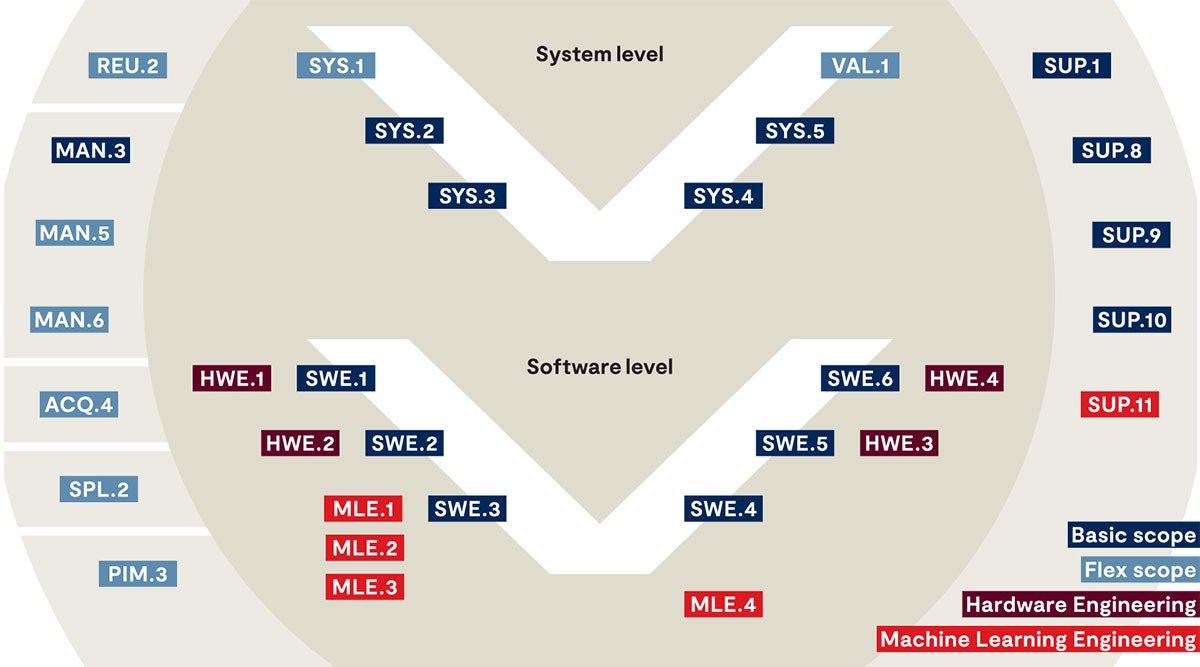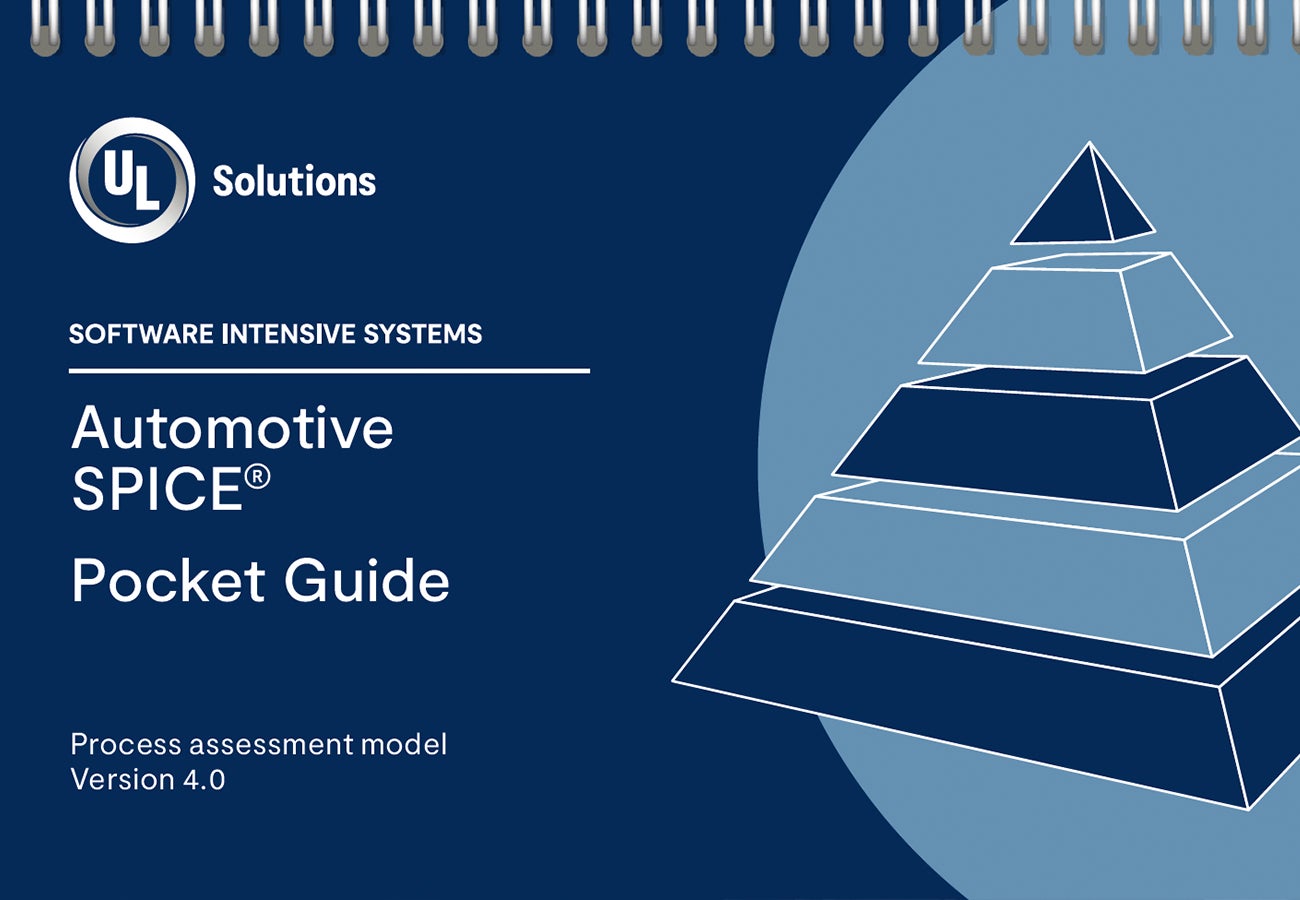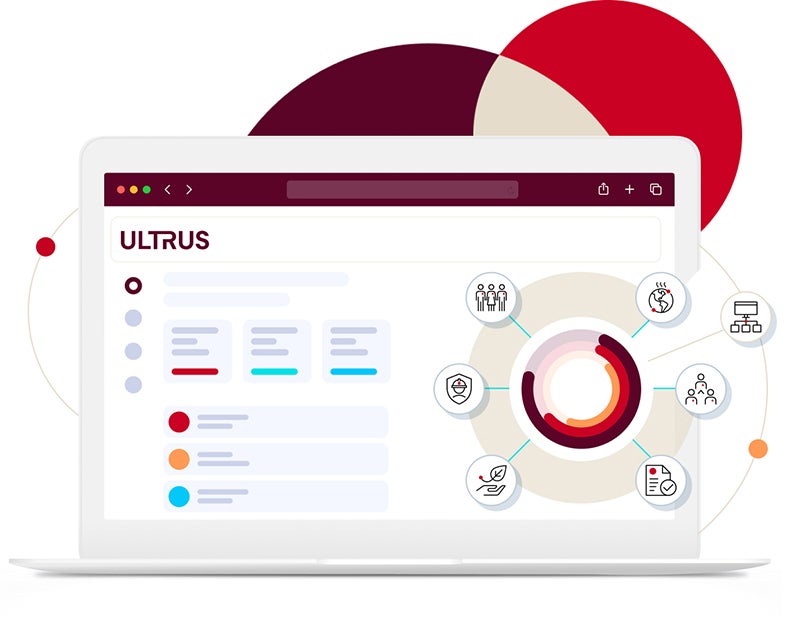
Automotive SPICE process model
Covering multiple engineering domains, so you can utilize Automotive SPICE® as a base for a reliable R&D process landscape.
Automotive SPICE® (ASPICE) provides an established standard for reliable development processes. As a process reference model, ASPICE prescribes the process requirements, the outcomes that a process must meet, and the associated activities, enabling R&D teams and departments to design a workflow that supports the development of automotive systems with a minimum of correction loops. To support smooth integration into an overall system, model extensions for dedicated engineering domains, such as hardware and machine learning, are also available. Furthermore, ASPICE provides connections to other nonfunctional requirements such as functional safety, autonomy safety and cybersecurity.

A global standard for R&D processes
The versatility of the ASPICE model and its openness for various engineering domains advanced it as the leading process model in the automotive industry. Many original equipment manufacturers (OEMs) expect their suppliers to design their development processes in a manner that fulfills the process specifications of ASPICE as a prerequisite to deliver the expected outcomes — especially reliability for both the product and its delivery. The model consists of a structured collection of best practices from the car manufacturing industry and includes industry-specific models for the development of systems, software, hardware and mechanics.
The industry-specific standard was developed in 2005 by the VDA’s Quality Management Center, with the involvement of experts from UL Solutions. The model is currently in its fourth generation. ASPICE is also used for the establishment of development systems in sectors other than the automotive industry.
To leverage the benefits of ASPICE in the development of mechatronics systems, ASPICE is designed as a plug-in model in which development processes for other engineering disciplines can be added. Experts from UL Solutions are actively involved in the plug-in development and are co-authors of model extensions.
Automotive SPICE® and SPICE models

- SPICE for IT service management
- Digital maturity SPICE
- Automotive SPICE for Cybersecurity
- Organization SPICE
The ASPICE processes at a glance
ASPICE v4.0 has eight process groups. These groups are clusters of process prescriptions addressing a dedicated concern — especially engineering processes but also management and support processes — such as project control and procurement.
- 1. Systems Engineering processes (SYS.1-5)
- SYS.1, Requirements Elicitation
- SYS.2, System Requirements Analysis
- SYS.3, System Architectural Design
- SYS.4, System Integration and Integration Verification
- SYS.5, System Verification
- 2. Software Engineering processes (SWE.1-6)
- 3. Machine Learning Engineering processes (MLE.1-4)
- MLE.1, Machine Learning Requirements Analysis
- MLE.2, Machine Learning Architectures
- MLE.3, Machine Learning Training
- MLE.4, Machine Learning Model Testing
- 4. Acquisition process group (ACQ.4)
- 5. Hardware Engineering processes (HWE.1-4)
- HWE.1, Hardware Requirements Analysis
- HWE.2, Hardware Design
- HWE.3, Verification Against Hardware Design
- HWE.4, Verification Against Hardware Requirements
- 6. Management processes (MAN.3, 5-6)
- MAN.3, Project Management
- MAN.5, Risk Management
- MAN.6, Measurement
- 7. Supporting processes (SUP.1, 8-11)
- SUP.1, Quality Assurance
- SUP.8, Configuration Management
- SUP.9, Problem Resolution Management
- SUP.10, Change Request Management
- SUP.11, Machine Learning Data Management
- 8. Validation processes (VAL.1)
- VAL.1, Validation
ASPICE process assessments
ASPICE allows you to measure whether a work process is being adhered to and incorporated into daily practices. In this context, ASPICE utilizes a series of levels that denote the capability that a process has achieved. Each process is ascribed a level from zero to five. To achieve a particular level, the relevant model elements from ASPICE must be implemented in their appropriate form.
Whether or not a company has achieved the required level is ascertained by means of the assessment. This highlights the company’s strengths and weaknesses, as well as making recommendations for improvements. Assessments are only recognized in the automotive industry if they are carried out by experts. The VDA utilizes the intacs® Industrial Training system to certify these specialists.
In addition to the new workflow processes, a change in organizational culture is often required before a new level can be attained. Therefore, improvement can be time-consuming to implement. In a larger-scale automotive organization, the measures needed to achieve and sustainably maintain level three typically extend over several years.

ASPICE Overview
Create reliable R&D processes to develop and integrate high-quality products with confidence.

ASPICE Training Courses
Understand how you can improve and evaluate the reliability of your automotive R&D processes.

Original ASPICE Pocket Guide
The original ASPICE v4.0 pocket guide is a handy overview of the process requirements.
Get connected with our sales team
Thanks for your interest in our products and services. Let's collect some information so we can connect you with the right person.

